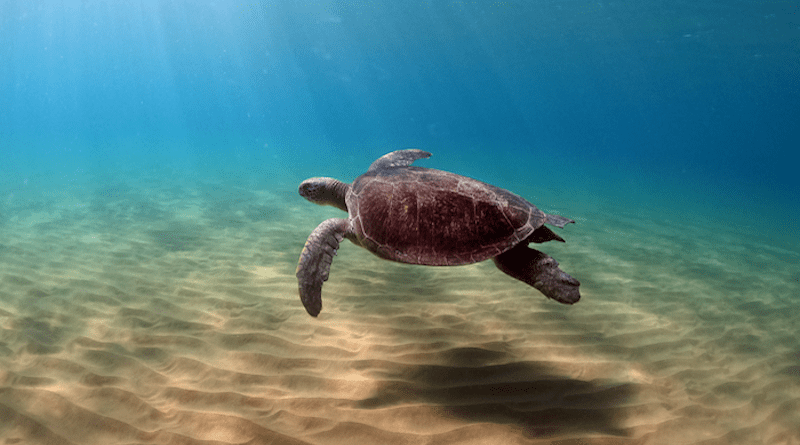Egyptian Lagoon Vital To Cyprus Turtles
The number of green turtles breeding in Cyprus has risen in recent years – but this bounce-back depends heavily on an Egyptian lagoon where many turtles feed, new research shows.
Green turtles, an endangered species, spend most of their lives foraging in a single area, but they return to the beach where they hatched to lay eggs.
The new study, by the University of Exeter and the North Cyprus Society for the Protection of Turtles (SPOT), tagged and tracked females laying eggs at key rookeries (breeding beaches) in Cyprus, and found 74% forage at Lake Bardawil in Egypt.
The study found that nest numbers have almost tripled since the early 1990s – but the dependence on a few feeding sites, especially Lake Bardawil, leaves turtle populations vulnerable if conditions there change.
“Since about 2010, our tracking of turtles from Cyprus has shown a large increase in the number foraging at Lake Bardawil,” said Dr Robin Snape, of the Centre for Ecology and Conservation on Exeter’s Penryn Campus in Cornwall.
“At the same time, the number of adult turtles foraging around Cyprus and Turkey has declined – possibly due to high bycatch (accidental catch) of turtles in fisheries there.
“The overall increase in nest numbers appears to be driven by protection of nesting sites in Cyprus and conditions at Lake Bardawil.
“It’s possible that the lake will reach its capacity, and at that point the green turtle population could stop increasing.”
Lake Bardawil is a lagoon with a man-made opening that connects to the sea, allowing marine life including turtles to swim in and out.
It was created in the 1950s as a fishery, but it has become an ideal seagrass habitat for adult green turtles, which are typically over a metre in length and weigh more than 100kg.
The new study used long-term satellite tagging to track 19 female turtles nesting at major rookeries on the Karpaz Peninsula, Cyprus.
While most of the turtles went to Lake Bardawil, one migrated 1,500 miles (2,400km) to Djerba island, Tunisia – the longest distance yet recorded for a Mediterranean green turtle.
Comparing the oldest available three-year nest count averages (1993–1995) with nest counts undertaken as part of this study (2017–2019), average annual nest numbers increased from 186 to 554.
“Given the importance of Lake Bardawil for green turtles in the Eastern Mediterranean, it’s vital that the habitat there is managed in a way that protects turtles and supports the livelihoods of fishers,” said Professor Annette Broderick, from the University of Exeter.
“Reducing bycatch and protecting habitats in other locations could also increase green turtle numbers and reduce reliance on this single location.”
The study was funded by the MAVA Foundation and the Natural Environment Research Council.
The paper, published in the journal Global Ecology and Conservation, is entitled: “Mediterranean green turtle population recovery increasingly depends on Lake Bardawil, Egypt.”
The tracks of turtles involved in the study can be viewed at SPOT’s website here.

